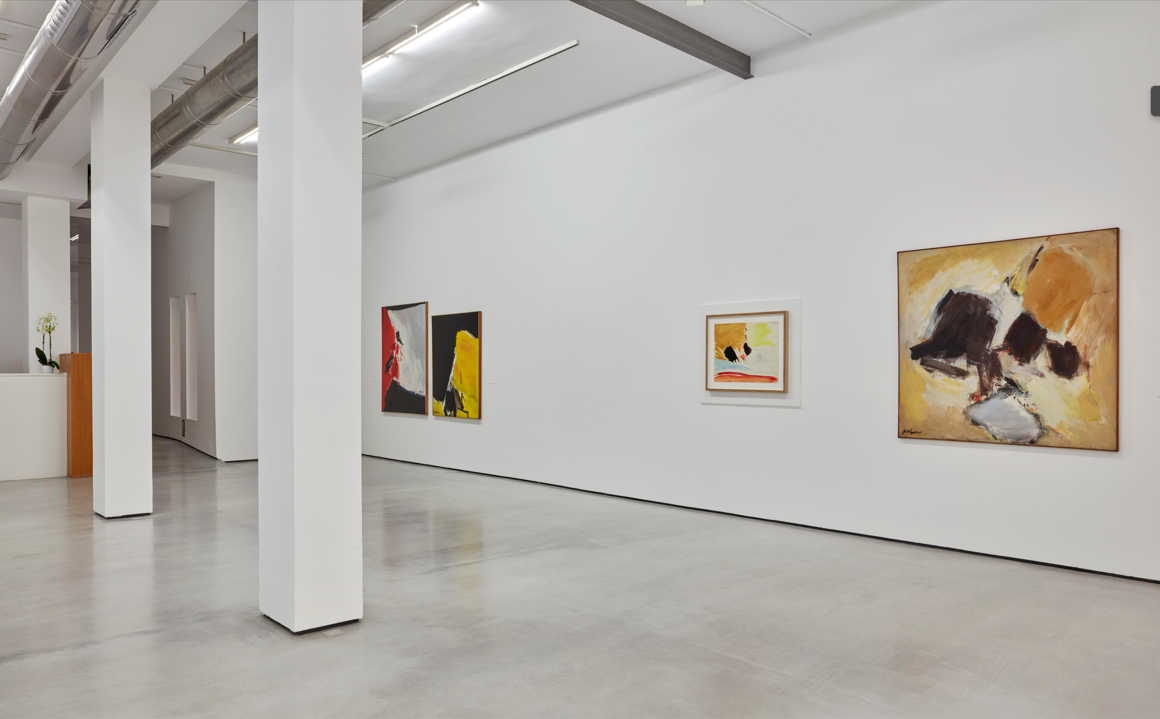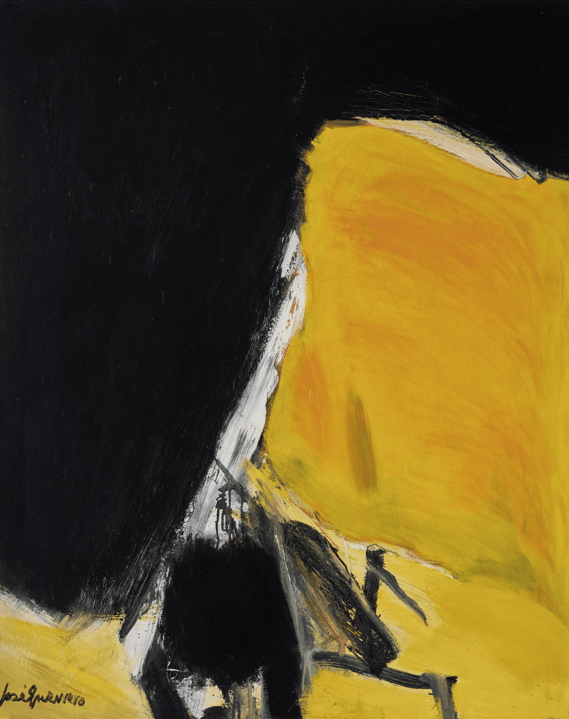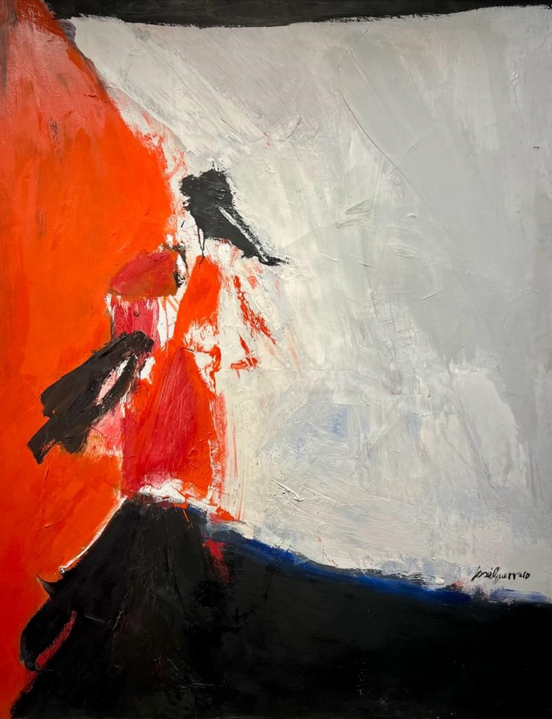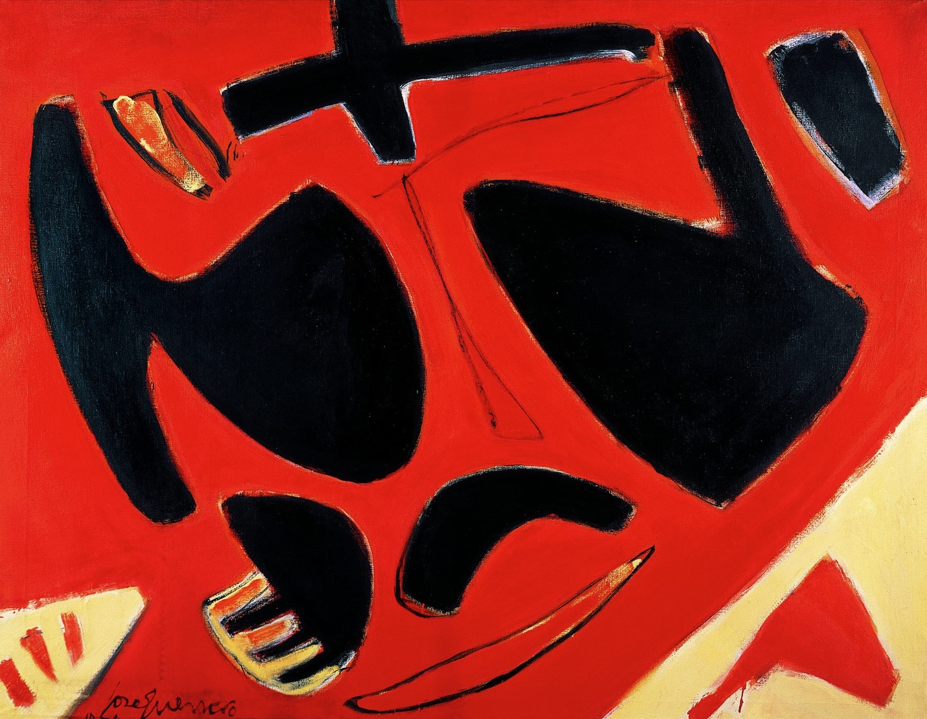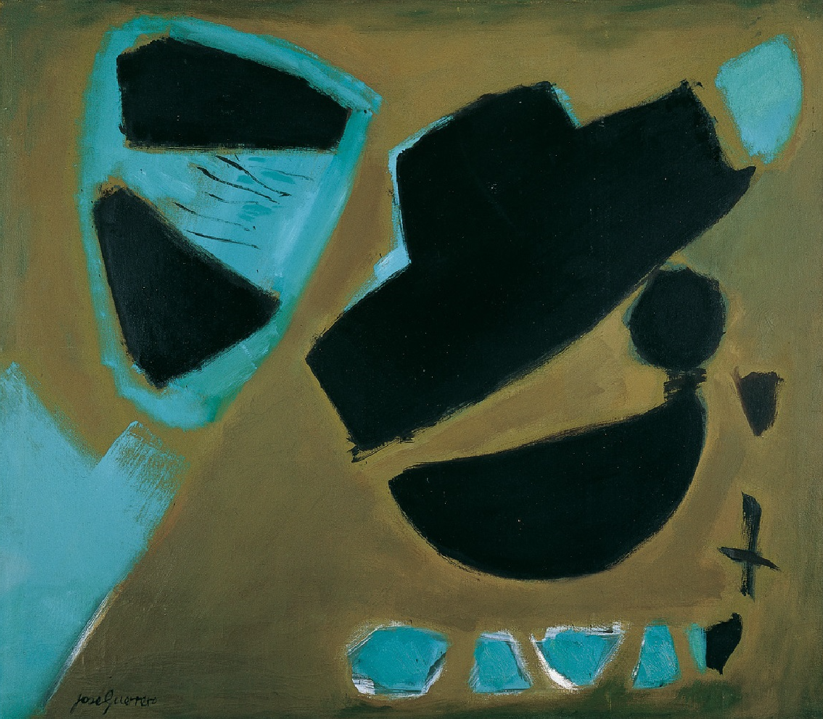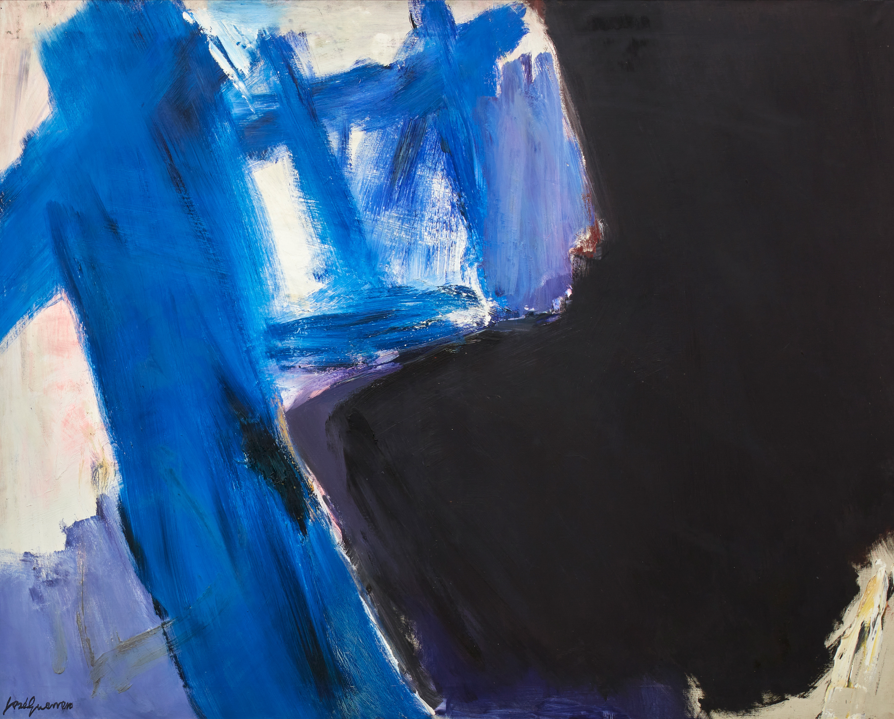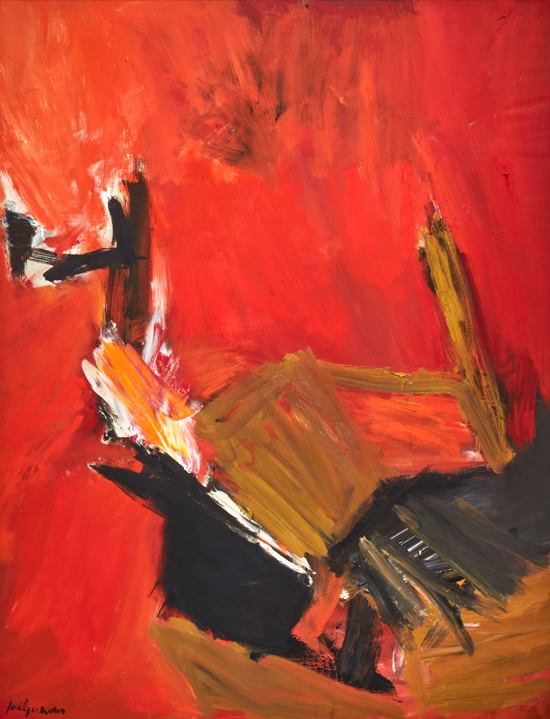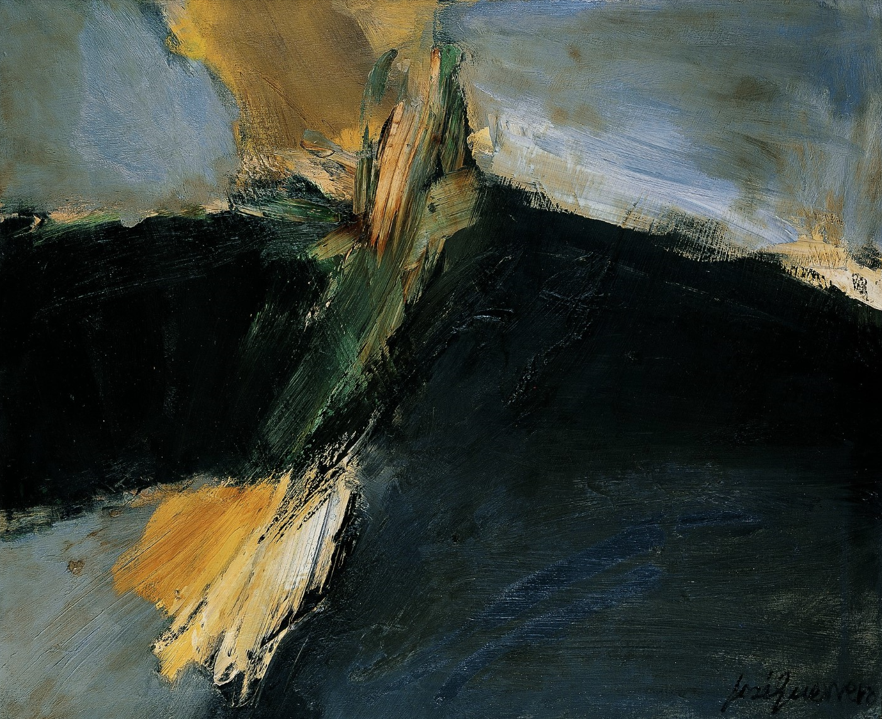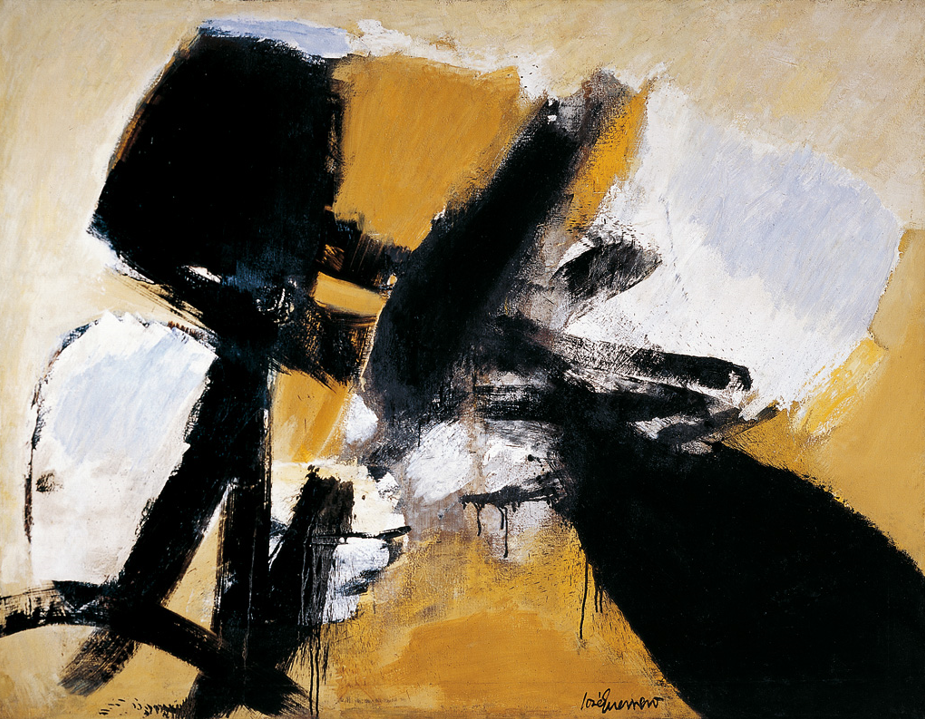The 1950s and 1960s
Madrid
We are pleased to present the fourth exhibition of José Guerrero (Granada, 1914-Barcelona, 1991) since the gallery began representing the artist’s legacy.
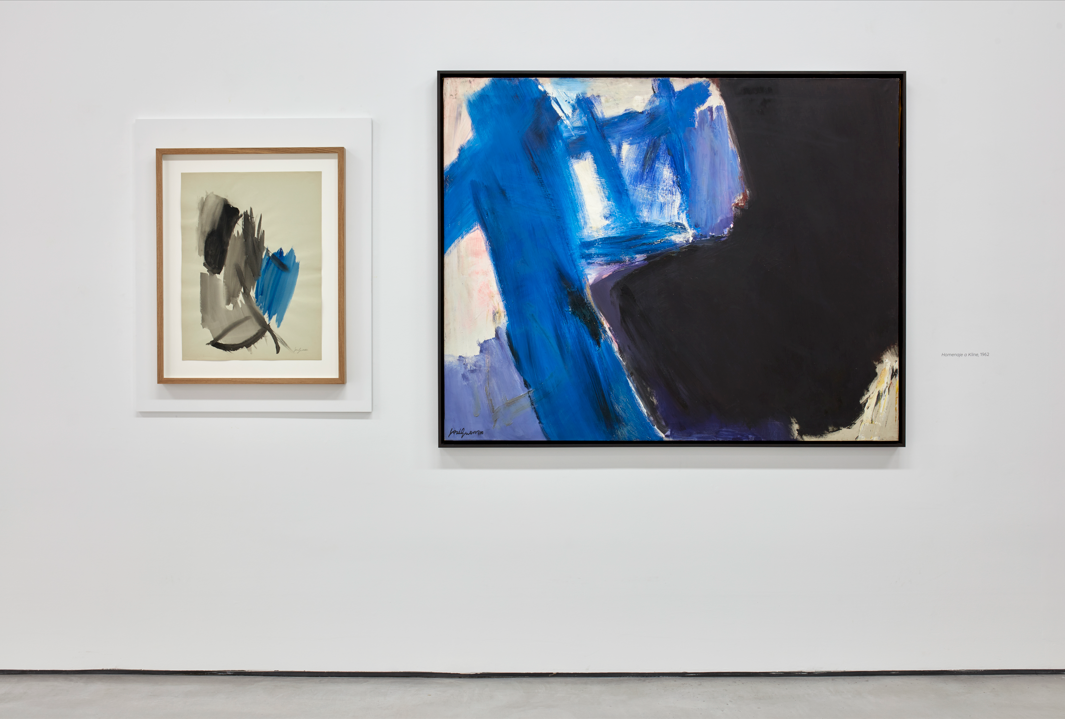
Focusing on a crucial moment in his career and in post-war Spanish art, the exhibition features ten paintings and five works on paper created between 1953 and 1965 (the year the artist returned to Spain), several of which had not been seen in public for over six decades.
We propose a journey through Guerrero’s work spanning just over a decade. The oldest painting, Ocultos (1953), presents a set of black, curved, “biomorphic” elements, floating in space. They appear closed, as if compressed without having exploded, and these elements remain present in a slightly later canvas: the monumental Signo (1954), a key work presented in the joint exhibition with Joan Miró at the Arts Club of Chicago. Thanks to this exhibition, Guerrero achieved his first solo show in the famous Betty Parsons Gallery in 1954, where he finally found “his place in the art world,” and Signo was once again displayed.
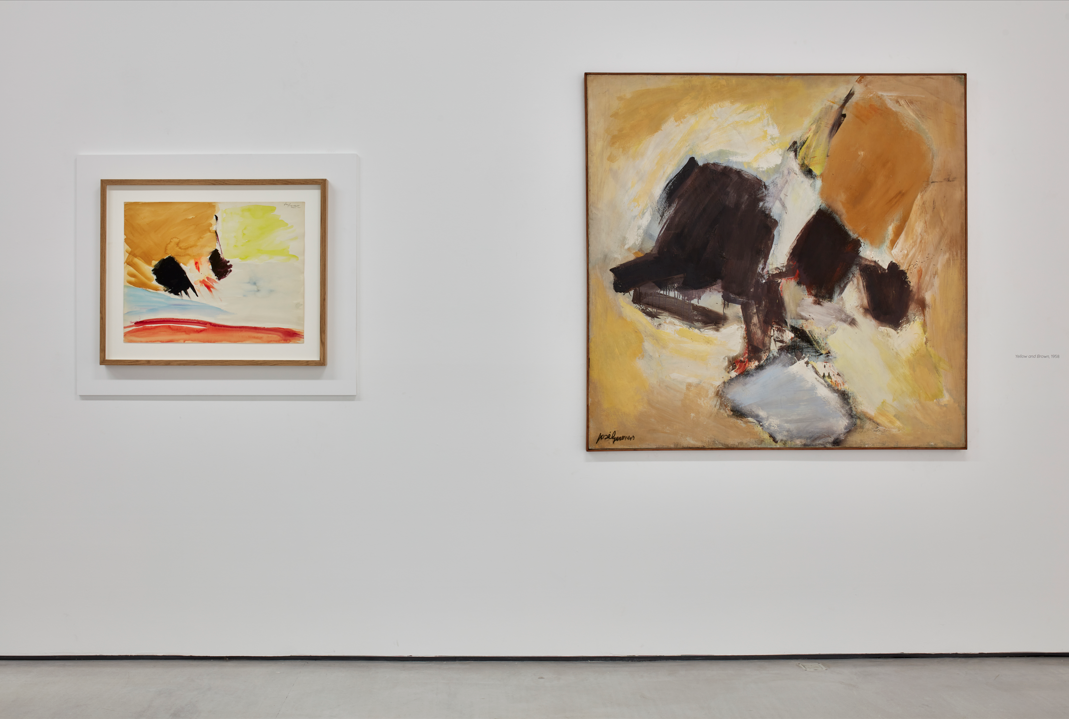
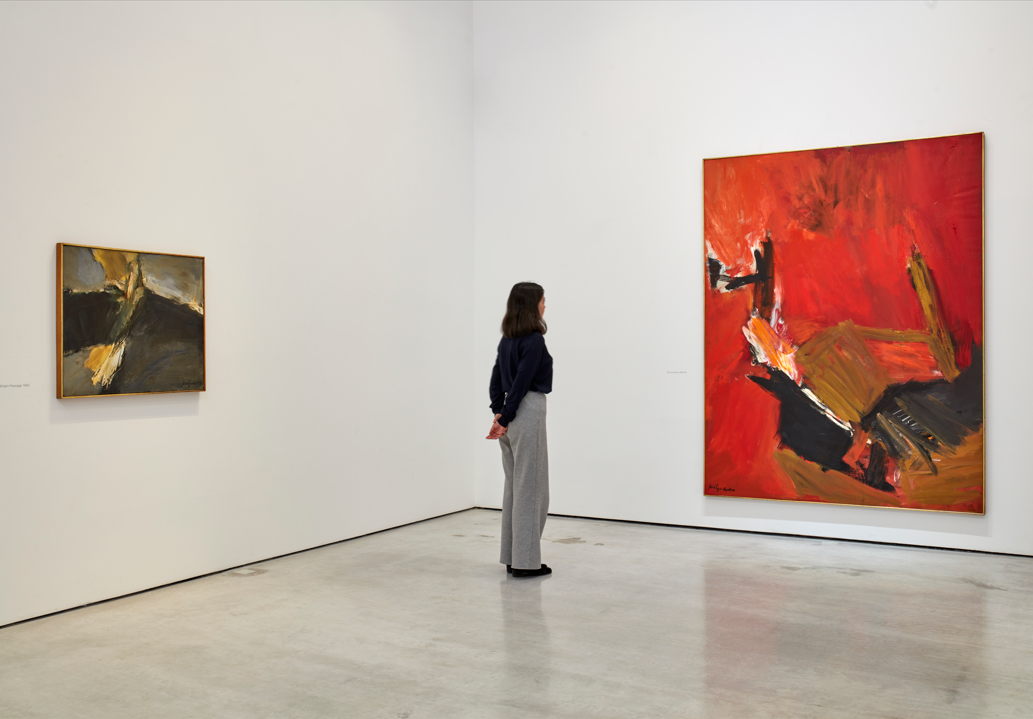
Presencia del negro con amarillo (1958) with white and earth tones; Yellow and Brown (1959) with yellow and ochre; Ascendente (c. 1963) with green and red… although there are exceptions, such as El paño de Verónica (1965-6), which seemingly was painted only with black, red, and white, but reveals a delicate blue area at the bottom, in the pure style of his friend Kline.
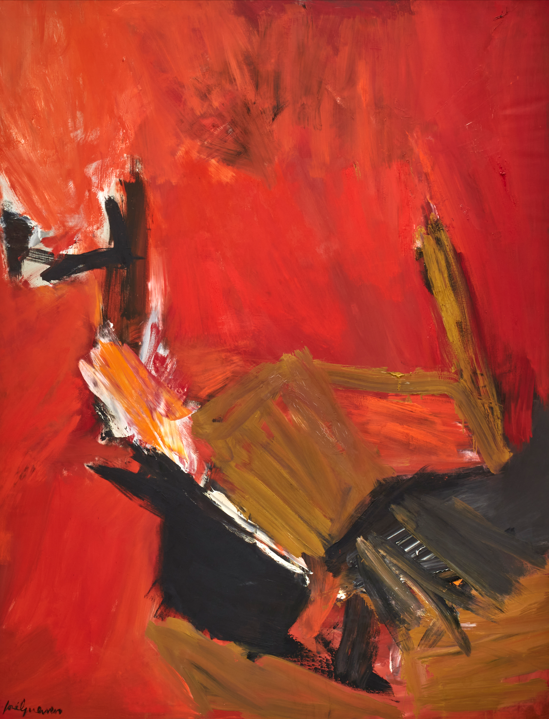
Guerrero’s work, which is housed in a museum dedicated to him in Granada (Centro José Guerrero), is part of several prestigious collections, including the Albright-Knox Art Gallery, Buffalo, New York; the Metropolitan Museum of Art, New York; the Museum of Fine Arts, Boston; the Museum of Modern Art (MoMA), New York; the Solomon R. Guggenheim Museum, New York; the Museo Nacional Centro de Arte Reina Sofía (MNCARS), Madrid; the Patio Herreriano Museum of Contemporary Spanish Art, Valladolid; the Helga de Alvear Museum of Contemporary Art, Cáceres; and the Juan March Foundation, Madrid and Cuenca.
